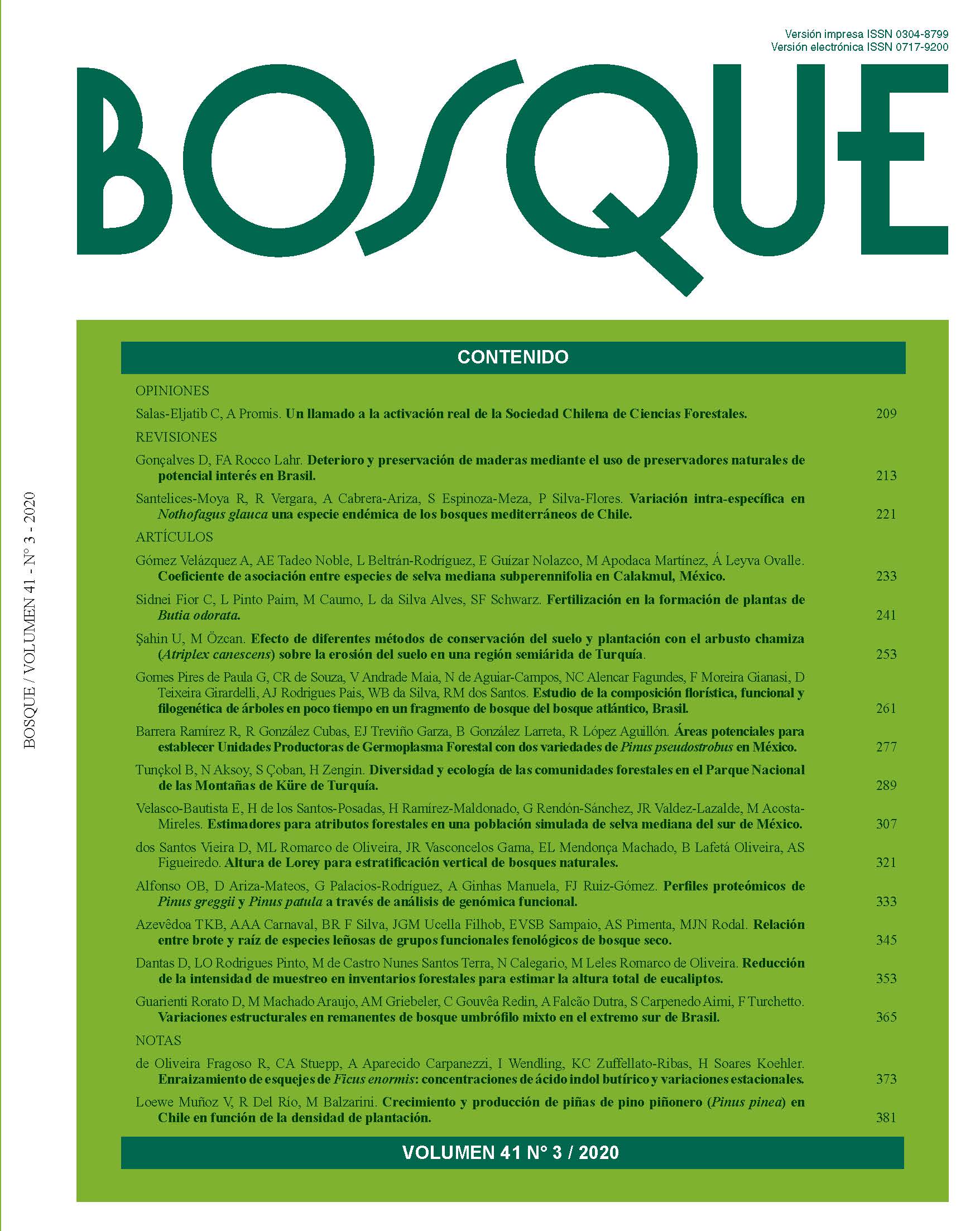Fertilization in Butia odorata seedlings formation
Main Article Content
Abstract
Butia odorata is an endangered palm tree native of southern Brazil and Uruguay with great food and ornamental potential. The lack of phytotechnical information hinders the commercial production of their seedlings. The aim of this work was to test doses of fertilization on the formation of B. odorata seedlings and tolerance to salinity levels in the substrate. The seedlings were cultivated in containers, submitted to control and four doses of fertilizer per liter of substrate. We evaluated stem diameter, number of leaves and pinnate leaves, electrical conductivity (EC) and pH of the substrate. The experimental design was in random blocks with 10 plants per treatment. Dry density, air space, and total pore space of the substrate were within the ideal ranges, such as EC and pH, without a significant trend for these last two variables in relation to the doses of fertilizers. Throughout the experiment, the pH remained adequate, except for higher dosage treatments that acidified the substrate. EC increased gradually, except for control treatment. There was a significant difference between treatments and blocks for plant variables, with the second access plants presenting larger stem diameter. The dosages that induced higher responses were 0.6 and 1.2 g L-1 with EC corresponding to 5 mS cm-1, which is possibly the limit of salts in the substrate tolerated by the species. B. odorata responded positively to the fertilization during the formation of the seedlings. However, until the juvenile phase, its development is impaired if EC reaches 5 mS cm-1.

